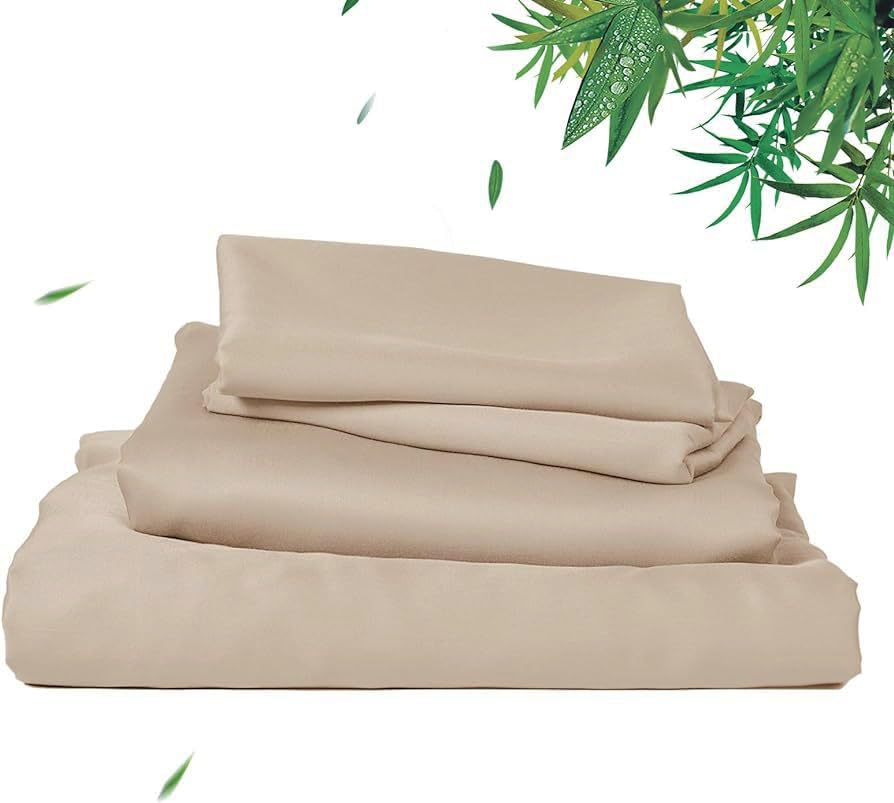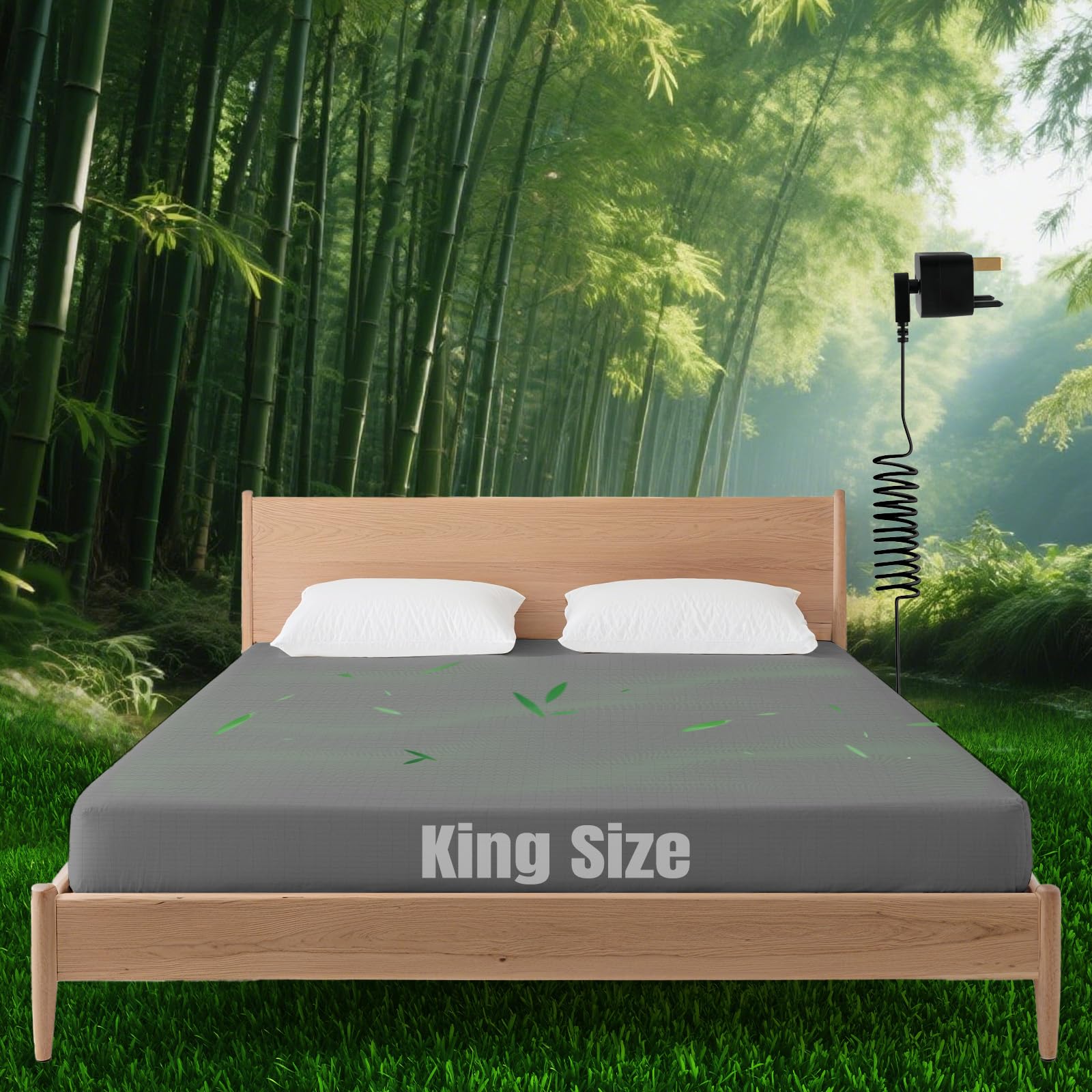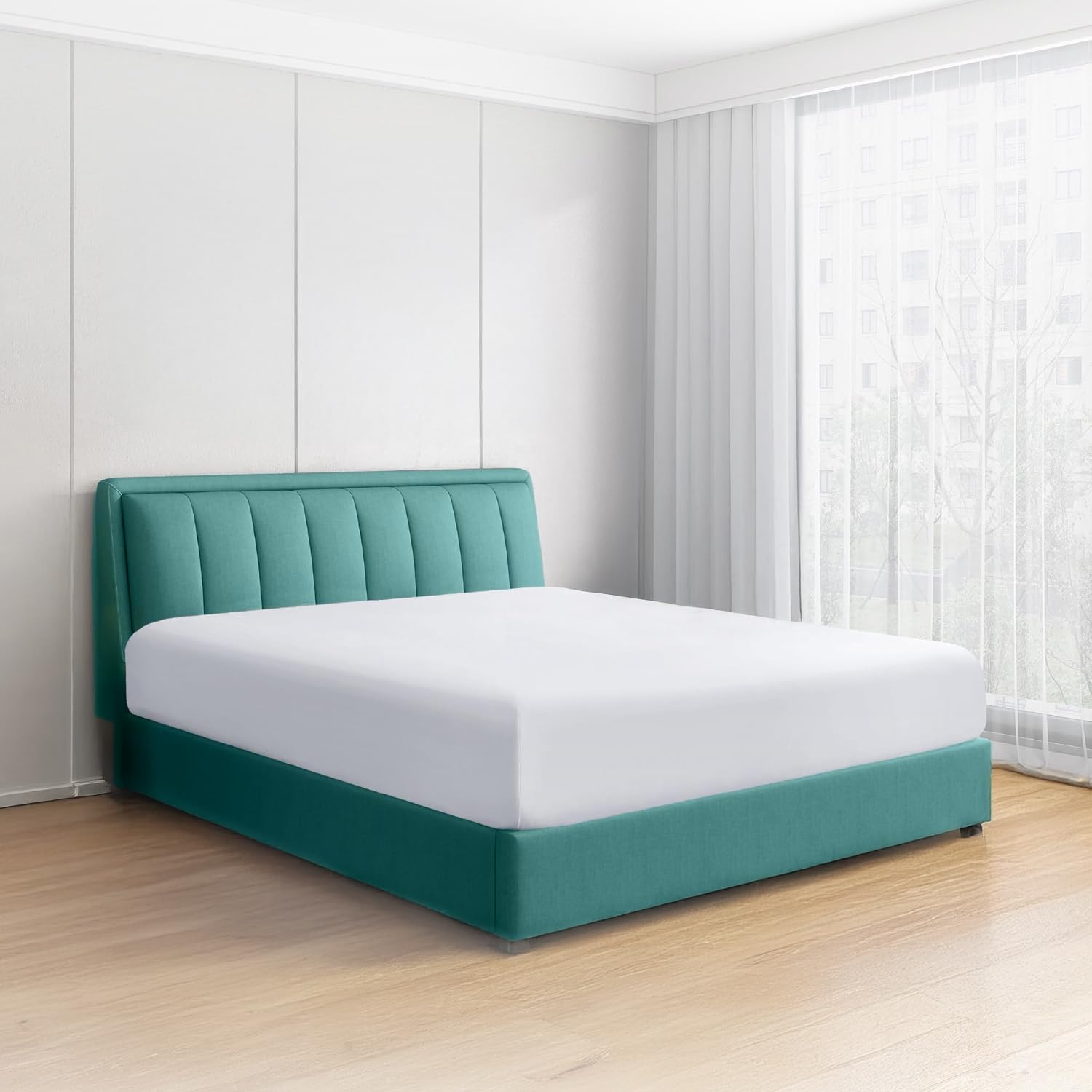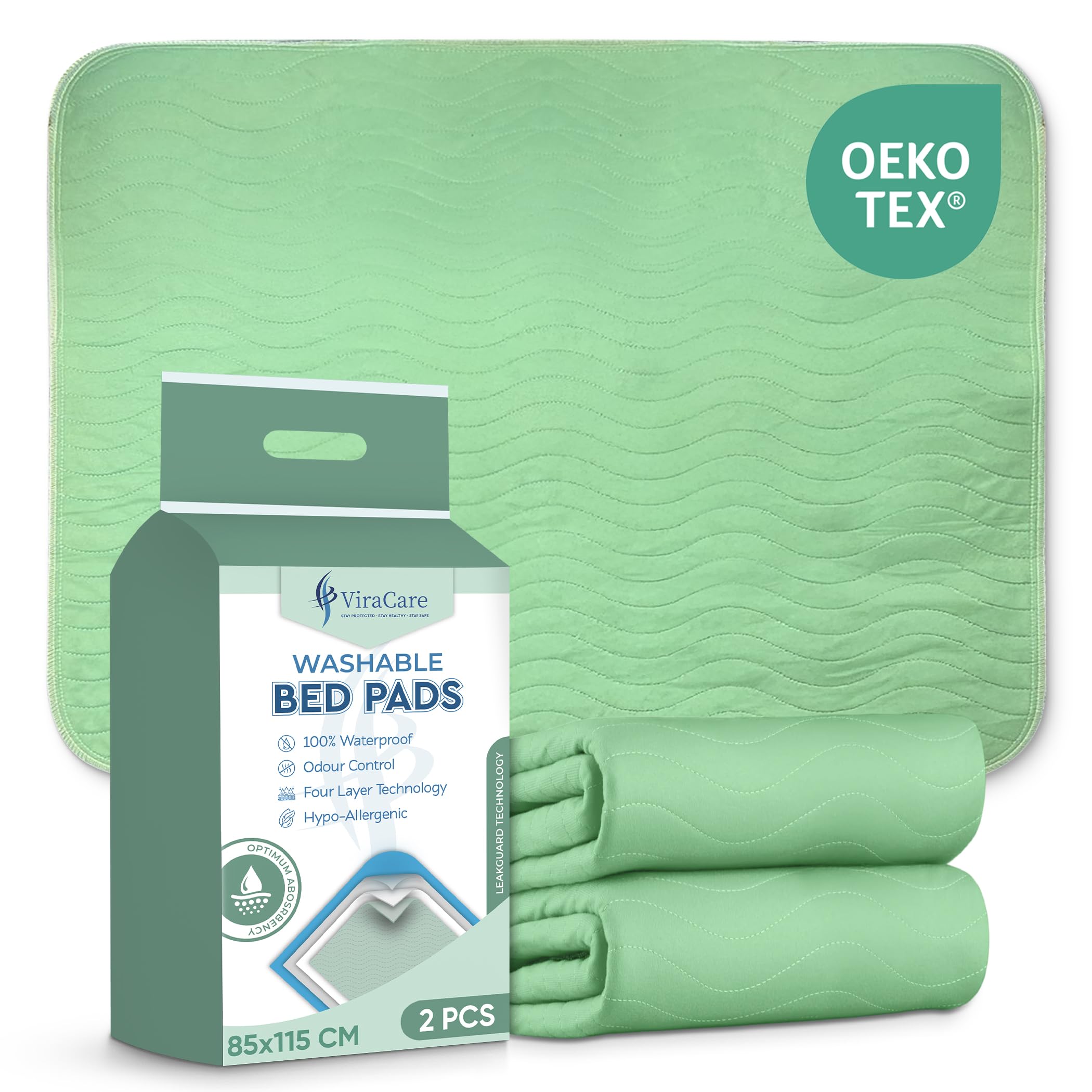Percale and sateen are the two most common cotton weaves for bed sheets in the UK, and each creates a distinct feel and temperature profile. If you sleep hot, percale’s matte, crisp finish often feels fresher. If you prefer a smooth, drapey surface in cooler rooms, sateen can be more inviting. This guide compares both weaves in clear terms, explains how thread count really works, and helps you pick a set that suits your bedroom across the seasons.
Seasonal warmth usually comes from duvets that balance weight and airflow in UK bedrooms.
How the Weave Changes Feel
Percale uses a one over, one under pattern that produces a matte finish with a slight crinkle. Air moves easily through the gaps in the weave, so percale tends to feel cool and dry against the skin. High quality percale feels crisp rather than scratchy and softens with washing while keeping a light, airy hand. Sateen uses a four over, one under pattern that places more yarns on the surface, which creates a smooth, lustrous feel. The fabric drapes closely around your body and can feel a touch warmer. Both can be excellent when well made. Your choice comes down to whether you value airflow or a silky hand feel.
Temperature and Seasonality
In a centrally heated UK home, percale sheets in the 200 to 300 thread count range feel comfortable for much of the year. They are a reliable choice for hot sleepers and for summer months, especially when paired with a 4.5 tog duvet. Sateen sheets in the 300 to 600 thread count range feel smoother and slightly warmer, which many people enjoy in autumn and winter. If you and your partner have different preferences, keep one percale set and one sateen set and rotate them with the seasons. That approach gives you comfort flexibility without replacing your duvet every few months.
Thread Count Without the Hype
Thread count is the number of threads per square inch of fabric, but it is not a guarantee of quality. Very high numbers are often achieved by counting multi ply yarns, which can make fabric denser without improving softness or durability. For percale, a genuine 200 to 300 thread count using long staple cotton is an excellent sweet spot. It feels cool and breathable and softens nicely over time. For sateen, 300 to 500 is usually ideal. The best signal of quality is the fibre itself. Long staple cotton such as Egyptian or Supima generally feels smoother and lasts longer because the yarns are stronger and less prone to pilling.
Care That Preserves Breathability
Washing practices affect how sheets feel. Use a mild detergent, avoid heavy fabric softeners and wash on cool or warm settings according to the label. Fabric softeners can coat fibres and reduce wicking, which makes sheets feel warmer and less breathable. Shake percale sheets before drying and remove them slightly damp to let creases relax. Line drying increases freshness in summer. For sateen, tumble on low and remove promptly to reduce wrinkles. If you iron, a quick pass on pillowcases and the top hem creates a crisp look without spending time on every piece.
Fit and Depth
A fitted sheet should hug the mattress without straining at the corners. Measure the full depth of your mattress, including any topper, and choose a pocket depth that is two to five centimetres deeper than that number. In the UK, extra deep sheets between 30 and 40 centimetres suit many tall mattresses. Elastic that runs the full perimeter holds better than corner only elastic. If your sheet pops off, check whether the mattress topper raises the depth beyond the sheet’s limit and consider a sheet with stronger elastic or corner straps.
Which Weave Works Best for You
Pick percale if you run warm, like a crisp hotel feel and prefer lightweight fabrics that let air pass freely. Percale pairs well with linen duvet covers in summer for maximum breathability. Choose sateen if you want a smoother touch that feels cosy in cooler rooms and you appreciate a subtle sheen. Sateen drapes nicely and resists the slight crinkle that some people notice with percale. If you are unsure, try one pillowcase of each first and sleep on them for a few nights to test your preference before buying a full set.
Beyond Cotton: Linen and Cellulose Blends
While this guide focuses on cotton weaves, it helps to consider alternatives. Linen is highly breathable and excellent at moisture management, which makes it a top choice for hot sleepers and humid summer nights. It starts out textured and softens quickly with washing. Bamboo and lyocell (Tencel) fabrics have a cool touch and a fluid drape. Many people find them cooler than dense sateen and smoother than percale. If you like sateen’s smoothness but want better moisture control, a lyocell set can be a good fit.
Practical Combinations for UK Homes
For a warm sleeper in a modern flat, use 200 to 300 thread count percale with a 4.5 tog duvet in summer. Move to a 7 to 10.5 tog duvet in shoulder seasons while keeping percale sheets. In winter, switch to sateen and a 10.5 or 13.5 tog duvet depending on how cold your room runs. For a cooler sleeper in an older house, choose midweight sateen most of the year and keep a percale set ready for hot spells. If your partner runs hotter than you, rotate pillowcases so each person gets a preferred fabric while you keep the same fitted and flat sheet.
Crisp percale and smooth sateen sets appear in the best bed sheets; a balanced bed usually adds a season-appropriate duvet.
FAQs
Is percale always cooler than sateen? In practice, yes, because the weave leaves more space for air and moisture to pass. Fibre, finish and thread count also matter, so choose long staple cotton in a sensible thread count for best results.
Do higher thread counts mean better sheets? Not necessarily. Very high counts can reduce airflow. Aim for a balanced thread count and quality fibres instead.
What if I like both feels? Keep one set of each and swap seasonally. Use percale in summer and sateen in winter so your bed matches the weather.





